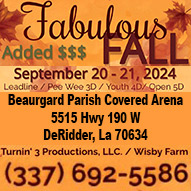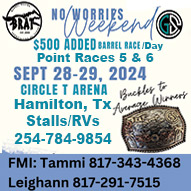By Dr. Thomas R. Lenz in The American Quarter Horse Journal
Summer is here, and with it hot and often humid weather that can cause horses to become overheated.
Horses produce large amounts of heat, mainly through digestion of feed and muscular activity during exercise. If the air is cooler than the horse’s body temperature, blood is shunted to the skin, where the horse easily rids itself of the excessive heat. However, if the air temperature is warmer than the horse’s body temperature, blood shunting is not enough, and sweating becomes the primary means by which the horse cools itself. The horse is the only mammal, other than man, that cools itself primarily by sweating. This wets the body so cooling, due to evaporation, can occur.
Problems develop and the cooling system breaks down during hot, humid weather when sweat doesn’t evaporate and adequate cooling cannot take place. The result is heat stress, which often leads to heat exhaustion or life-threatening heat stroke.
What It Looks Like
Symptoms of heat exhaustion include profuse sweating, muscle weakness, stumbling, rapid breathing (normal breathing rate for an adult horse is 8-18 breaths per minute) and an increased body temperature of 102 degrees to 106 degrees Fahrenheit (normal temperature is 98-101 degrees Fahrenheit).
The horse continues to sweat profusely, and despite the fact that his skin often feels cool, his body temperature is elevated and may remain elevated even after the horse has rested. A much more serious condition is heat stroke, where the affected horse’s skin is hot and dry, breathing is extremely rapid and the horse’s body temperature may reach 106-110 degrees Fahrenheit. If untreated, horses experiencing heat stroke may collapse, go into convulsions and die.
If a horse becomes overheated, the horse owner should not attempt to differentiate between the two syndromes but should immediately stop riding the horse, place him in the shade and call a veterinarian, as the situation may quickly become an emergency. If there is no breeze, provide air movement with a fan, if possible. Starting with the feet and legs, gradually wet the horse’s entire body, including the head, with cool water. Avoid using cold water and never attempt a cold-water enema. Small amounts of drinking water can be given at 15-minute intervals until the veterinarian arrives.
Preventing It
Heat stress can be prevented with proper management and conditioning. Calculating the heat index may alert the horse owner to unfavorable weather conditions where the horse should not be worked. To calculate the heat index, add the temperature in Fahrenheit and the percentage of relative humidity. If the sum is below 120, there should be no problem exercising a horse. If the sum is between 130 and 150, the horse will probably sweat but should not experience any problems if he gets plenty of water to replenish fluid lost during sweating. When the heat index exceeds 180, do not exercise horses because their body’s heat dissipation systems will not be adequate to prevent heat stress.
Certain horses are more susceptible to heat overload. Poorly conditioned horses, overweight horses, geriatric horses, horses in direct sunlight when the temperature is more than 100 degrees Fahrenheit, or animals in hot, poorly ventilated stalls or trailers are always at risk.
Horses not consuming enough water and not getting sufficient salt or electrolyte supplements are especially prone to overheating. Horses transported from cooler climates who have not had time to adjust to hot weather are especially vulnerable and should be provided adequate time to adjust to the warmer weather conditions. Rations high in protein generate extra body heat during the digestion process and make horses more susceptible to overheating.
Read more on America’s Horse Daily about preventing heat stress in your horse.





